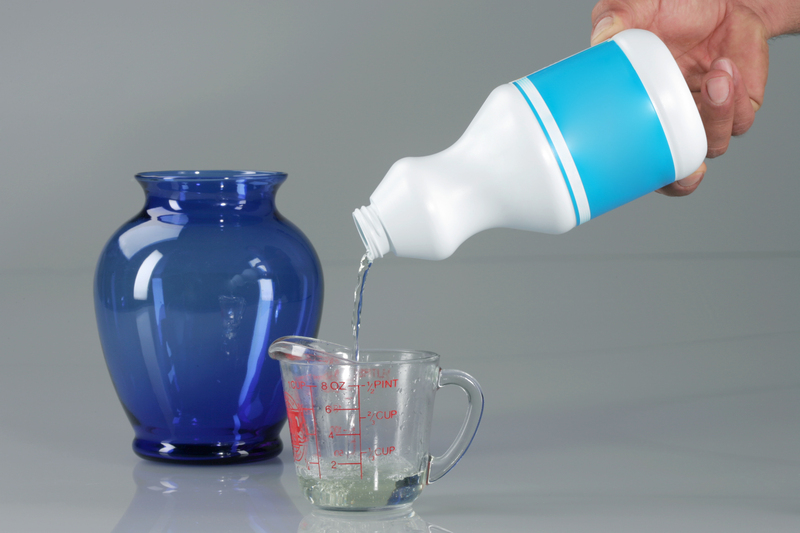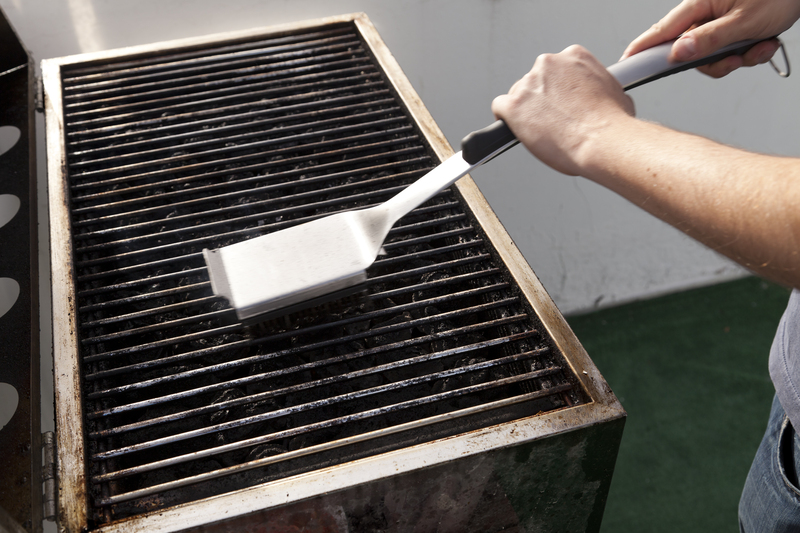Lustrous Looks: Comprehensive Jewellery Cleaning Strategies
Posted on 23/06/2025
Lustrous Looks: Comprehensive Jewellery Cleaning Strategies
Jewellery is far more than mere decoration. Whether you own a treasured family heirloom, sparkling diamond rings, or trendy silver pieces, keeping them lustrous and radiant is essential. Over time, exposure to dust, sweat, lotions, and daily wear can leave even the most exquisite jewellery pieces looking dull and lacklustre. That's where comprehensive jewellery cleaning strategies come into play--helping you restore shine, preserve beauty, and prolong the life of your favourite adornments.

Why Is Jewellery Cleaning Important?
- Enhances Appearance: Regular cleaning keeps jewellery looking dazzling by removing oils, grime, and residues.
- Prolongs Lifespan: Cleaning prevents buildup that can erode metal settings or loosen stones.
- Maintains Hygiene: Accumulated dirt and sweat can harbor bacteria--clean habits ensure your pieces are safe to wear.
- Protects Investment: High-value items retain their worth and sentimental value with proper care.
- Spot Damage Early: Regular inspections during cleaning can help you notice loose stones or damaged prongs before loss occurs.
Whether you're opting for DIY jewellery cleaning or professional services, knowing the right methods and when to use them is key to keeping your jewellery collection in optimal condition.
Understanding Different Types of Jewellery
Jewellery encompasses a vast range of materials: gold, silver, platinum, diamonds, pearls, gemstones, and costume jewellery. Each requires special cleaning techniques to maintain their luster without causing harm.
Gold Jewellery
Gold is durable, but it can still suffer from scratching and tarnish. Both yellow, white, and rose gold varieties benefit from gentle cleaning.
Silver Jewellery
Silver tarnishes easily, resulting in a dark, cloudy appearance. Silver jewellery needs techniques that effectively remove oxidation while minimizing abrasion.
Diamond and Gemstone Jewellery
Diamonds may be the hardest natural substance, but their settings--often delicate--must be treated with care. Colourful gemstones have various chemical and physical properties, necessitating specific cleaning methods for gemstone jewellery.
Pearl and Organic Jewellery
Costume and Fashion Jewellery
Costume pieces typically use non-precious metals and glued stones, which may loosen or discolor with harsh cleaning. Proper technique preserves their appearance and value.
Core Jewellery Cleaning Strategies
1. Gentle Cleaning with Soapy Water
For most durable pieces like gold, platinum, and hard gemstones, a simple soapy water soak is highly effective.
- Mix a few drops of mild dish soap with lukewarm water.
- Soak the jewellery for 15-20 minutes.
- Gently brush with a soft-bristled toothbrush to dislodge dirt, especially in crevices.
- Rinse thoroughly under clean water.
- Dry with a lint-free cloth.
*This versatile method is safe for most hard gemstones and sturdy metals. Avoid on pearls, costume, and soft stone jewellery.
2. Baking Soda Paste for Silver Shine
To banish silver tarnish, a gentle baking soda paste restores its brilliance:
- Create a paste with 2 parts baking soda and 1 part water.
- Apply gently using your fingers or a soft cloth.
- Rub softly (never scrub hard) to avoid scratching the surface.
- Rinse and dry thoroughly.
3. Aluminum Foil and Baking Soda Tarnish Removal
For larger silver pieces or stubborn tarnish:
- Line a bowl with aluminum foil (shiny side up).
- Add hot water and dissolve a tablespoon of baking soda and salt.
- Soak your silver jewellery for several minutes.
- Rinse and buff dry with a soft cloth.
This creates a chemical reaction, lifting tarnish without damaging the item.
4. Specialized Gemstone Cleaning Methods
- Emeralds: Wipe with a damp, soft cloth. Avoid ultrasonic cleaners and harsh chemicals.
- Opals: Clean with a damp cloth only. Avoid soap, chemicals, or soaking; store in moderate humidity.
- Rubies and Sapphires: Safe for warm, soapy water or non-abrasive jewellery cleaners.
*When in doubt, consult a jeweller or a detailed gemstone cleaning guide to protect precious stones.
5. Caring for Pearls and Delicate Organics
- Use a clean, barely damp cloth to gently wipe after each wearing.
- Never soak pearls or expose them to heat, acids, or cleaning agents.
- Restring regularly if worn often--over time, silk threads can weaken with exposure to body oils and moisture.
Pearls thrive in a slightly humid environment and should never be stored in airtight plastic.
6. Cleaning Costume and Fashion Jewellery
- Wipe gently with a soft, dry cloth after each use.
- For sticky residue, use a barely damp cloth, ensuring you keep water away from glued settings.
- Never soak costume jewellery--water can loosen glue and tarnish low-cost metals.
7. Ultrasonic Cleaners: Pros and Cons
Ultrasonic jewellery cleaners use high-frequency sound waves to agitate a cleaning solution, removing built-up grime from hard-to-reach places.
- Works best for: Plain metal bands, diamonds, sapphires, and rubies.
- Not suitable for: Porous or soft gemstones (turquoise, lapis, opal, emerald, etc.), pearls, glued items, and antique pieces.
Before using an ultrasonic cleaner, research your jewellery's specific materials. When in doubt, consult a trusted professional.
Professional Jewellery Cleaning Services
At-home cleaning is effective for routine maintenance, but periodic professional jewellery cleaning ensures a safe and thorough restoration. Benefits include:
- Diagnosis: Experts spot signs of wear, loose stones, or weaknesses in settings.
- Advanced Equipment: Professional polishing, ultrasonic baths, and steam cleaning deliver a brilliant finish.
- Deep Cleaning: Removes entrenched dirt, restoring the original sparkle without risk of damage.
- Service Records: For high-value or heirloom pieces, service documentation supports provenance and insurance claims.
A visit to your local jeweller every 6-12 months is highly recommended.
Store and Protect for Lasting Lustre
Proper cleaning is just half of the battle. Jewellery storage and protection strategies are equally important to preserve that lustrous look between cleanings:
- Separate Pieces: Use individual pouches, soft-lined compartments, or anti-tarnish bags. Metals, stones, and pearls scratch each other easily.
- Avoid Humidity: Store in a cool, dry place to slow oxidation, especially for silver.
- Remove Before Activities: Take off jewellery before showering, swimming, exercising, or applying lotions and perfumes.
- Regular Rotation: Give heavily worn pieces regular breaks to prevent excessive buildup of oils and dirt.
Common Jewellery Cleaning Mistakes to Avoid
- Using Abrasive Materials: Paper towels, tissues, and hard brushes can scratch delicate surfaces.
- Harsh Chemicals: Bleach, ammonia, vinegar, and acetone can discolor, etch, or damage metals and stones.
- Soaking Glued Settings: Costume jewellry and some settings in fine jewellery are held together with adhesives, which water can dissolve.
- Ignoring Professional Help: Attempting to fix prongs or overly soiled jewellery alone may result in permanent damage.
Eco-Friendly Jewellery Cleaning Options
As environmental consciousness grows, many are choosing natural, eco-friendly jewellery cleaning solutions:
- Baking Soda and Vinegar: Works well for hard-metal jewellery (avoid on gemstones and pearls).
- Lemon Juice: A diluted mixture can shine silver, but rinse thoroughly to prevent corrosion.
- Cornstarch Paste: Gently rub on silver, then buff with a soft cloth for a chemical-free polish.
- Bon Ami or Baking Soda for Gold: Use as a gentle, non-scratch scrub for plain gold bands.
Always research the compatibility of each cleaning method with your specific jewellery type. When uncertain, start with the gentlest approach--or ask a jeweller.
Step-by-Step Guide: At-Home Jewellery Cleaning Routine
What You'll Need
- Mild dishwashing soap
- Soft-bristled toothbrush
- Lint-free or microfiber cloth
- Small bowl of lukewarm water
- Baking soda (for silver)
How to Clean Your Jewellery
- Prepare the Cleaning Solution: Fill a bowl with lukewarm water. Add a small amount of dish soap and mix gently.
- Soak: Place your jewellery (one piece at a time) in the solution for 15-20 minutes.
- Brush Gently: Use the toothbrush to softly clean all surfaces, focusing on backs, undersides, and settings.
- Rinse Thoroughly: Rinse with clean lukewarm water over a small strainer or bowl.
- Dry: Dab dry with a lint-free cloth; air dry completely before storing.
*For silver pieces, apply a baking soda paste after step 3, then rinse.

FAQs: Expert Answers for Jewellery Cleaning
- How often should I clean my jewellery?
- Frequently worn pieces: Weekly cleaning is ideal.
- Rarely worn or stored items: Clean a few times per year and before wearing.
- Pearls and antique jewellery: Clean only as needed, using the gentlest techniques.
- Is toothpaste safe for jewellery cleaning?
While popular, toothpaste is abrasive and can scratch precious metals and stones--avoid it on your fine jewellery. - Can vinegar be used on jewellery?
Only on pure silver or gold--never on stones, pearls, or costume pieces. Vinegar is acidic and can damage delicate materials.
Keep Your Jewellery Dazzling: Final Thoughts
A lustrous look is about more than surface shine--it's about preserving the legacy, beauty, and value of your treasured items. With the right jewellery cleaning strategies, even the oldest heirloom or most frequently worn ring can sparkle for decades to come. Remember, gentle care, regular cleaning, and professional inspections form the trifecta of jewellery maintenance. Embrace these best practices, and your collection will remain an enduring source of confidence, tradition, and delight for years.
Looking for more expert tips on comprehensive jewellery cleaning and care? Bookmark this guide and shine on with confidence!









